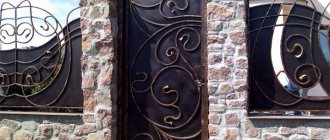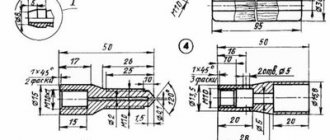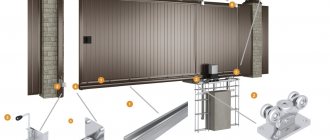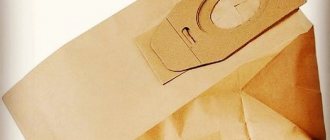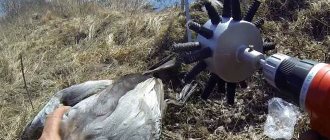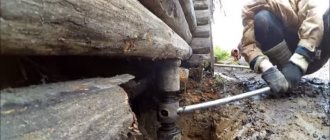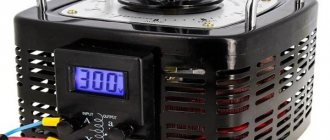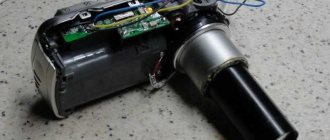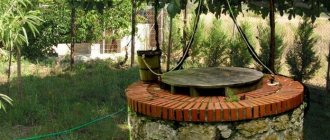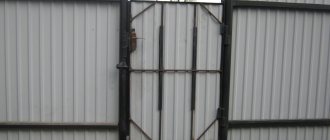Products called “Rust Converter” help solve the problem of corrosion of metal products.
Today there is a wide range of such chemicals on sale. However, the issue of making anti-rust products on their own is of interest to many.
Having decided to use a homemade converter, you must follow the recipe and technology for its use. At the same time, it is worth remembering all the pros and cons of such a product, as well as precautions when using it.
We'll tell you how to make a rust converter with your own hands at home in this article.
Can it be done at home?
The purpose of any rust converter is to convert iron oxides into inert compounds that form a hydrophobic film on the metal surface.
In order to achieve this goal, manufacturers select a specific chemical composition. Each company has its own secret nuances, which it tries not to disclose , so as not to provoke the creation of fakes.
However, the basis of any recipe contains a standard ingredient - phosphoric acid. It reacts with oxides and participates in the formation of a protective phosphate film.
In addition, the converter may include:
- tannins (convert iron oxides into neutral tannate complexes);
- zinc compounds (after reaction with phosphoric acid forms a protective layer);
- corrosion inhibitors (form an additional film, slowing down the corrosion process).
At home, it is easy to find analogues of the main active ingredients and prepare a simple but effective converter. It is prepared from a smaller number of components by conventional mixing in a container.
Chemical cleaning
The arsenal of chemical cleaning methods and compositions is most diverse. Corrosion is removed chemically - by treating the oxides with acid solutions.
- The most effective remedy is hydrochloric acid, especially at an appropriate concentration - at least 15% (at a lower concentration, the dissolution does not stop, but slows down noticeably).
- The use of compositions based on sulfuric acid is not recommended, since as a result, a layer of iron hydrides is formed on the cleaned surface, which increases the fragility of the product. This layer does not need to be cleaned: after a day, this chemical compound will disintegrate on its own under the influence of moisture in the air. However, sometimes this is not acceptable.
- At home, you can use vinegar, lemon, or even Coca-Cola to remove rust from small surfaces. The principle of operation is the same - we immerse the object in acid and leave it for a while, then clean it.
The etched surface must be neutralized from acid residues - washed under a warm soapy solution, and then thoroughly cleaned or dried in calm air.
Pickling is an environmentally harmful process: care must be taken to ensure that the remnants of the used product do not get on food products, protect your hands from the corrosive effects of reagents, etc. Therefore, the liquid that can be used to effectively remove rust must be non-toxic. The following methods can be used as an alternative to acid etching:
- Electrolytic etching in ferric chloride solution. This composition is non-toxic and available for purchase. Cleaning is carried out by immersing the item with rust in a solution of ferric chloride, while connecting one of the electrodes to the bath with the solution, and the second to the item being cleaned. The voltage during electrolytic etching is low - no more than 12 V, so the technology is completely safe. In the absence of ferric chloride, you can use any household alkali, in particular caustic soda. Depending on the required cleaning intensity, the process can be continued for 3-15 minutes.
- Applying a special cleaner to the metal surface, which includes borax, lime, and rust converters. The mechanism of action of such a substance assumes that its components penetrate into the sublayer part of the rust, soften it and then transform it into flakes, which can be easily removed with a stream of warm water.
The choice of the optimal method for cleaning metal from rust depends on the size of the item, the availability of tools and equipment. A well-cleaned surface must be further primed, and it is ready for painting.
Pros and cons of a homemade product
The anti-rust product, made by yourself, has a number of advantages. However, it cannot completely replace professional converters. Due to the existing disadvantages, many users prefer ready-made store-bought chemicals. For an objective assessment, it is necessary to consider both the pros and cons.
Homemade composition is valued for the fact that it:
It is not toxic to humans, as it consists of harmless substances.- Does not require very complex and time-consuming manufacturing technology.
- Has simple and clear instructions for use.
- Helps achieve rust removal and coating protection.
- It is much cheaper than branded analogues.
The disadvantages of a homemade converter make its use limited and reduce its popularity among motorists, housewives and production workers.
The weak points of the homemade corrosion modifier are:
- The need to find a convenient container and method of application.
- Can only be used with a thin layer of rust.
- Lower efficiency compared to special means.
- The need for mandatory coating of the product with paint or varnish.
How to make, what is included?
Any converter must contain two main substances that react and form a protective film on the metal surface.
Home remedies that do this include citric acid and baking soda. The third component is water, which serves as a filler and medium for the reaction.
The step-by-step algorithm for manufacturing a home converter is as follows:
add 1.3-1.5 liters of citric acid to 1 liter of water;- stir the solution to distribute the acid evenly;
- add 15 g of baking soda to the lemon liquid, mix;
- wait for the end of the chemical reaction (this is about 40 minutes);
- pour the converter into a convenient-to-use bottle.
Citric acid can be replaced in the recipe with oxalic acid. The technology for preparing anti-rust with this organic acid does not change.
How to use?
Taking into account the general recommendations for the use of rust modifiers, the characteristics of the homemade product and its degree of activity, the instructions for use are as follows:
- The surface of the rusty metal is cleaned of dirt and dust, and if necessary, a detergent is used.
- If the corrosion layer is thick (more than 100 microns), remove it with sandpaper or a wire brush.
- Check the quality of cleaning by running your hand over the treated area. If the surface is rough, correct it with sandpaper.
- A cloth or rag is generously moistened in the prepared converter and applied to the stripping site.
- Allow the solution to react for a quarter of an hour without lifting the soaked cloth from the treatment area.
- After complete drying, a primer is applied to the surface and covered with paint or varnish.
A converter based on organic acid and soda can be used not only as a “treatment” for rusty metal, but also to prevent corrosion.
Causes of rust
Most often, rust appears after winter.
- Paint chips. During operation, chips will always appear on the paint of the car, from small stones and sand. If the chip is deep enough and metal is exposed, then rust will appear on it within a month. If this place is not treated, then in a year, if the quality of the metal is poor, such a chip can turn into a hole.
- Dents and scratches. If the car body has been deformed, this can also lead to rust. The paint cracks at the bends, and moisture gets into the cracks, causing corrosion. If such cracks and scratches are not treated in a timely manner, rust will appear here over time.
- Excess moisture inside the car. Moisture should not accumulate inside the car, otherwise it will lead to corrosion on untreated parts. At the same time, the fight against such rust on a car is very complicated, since all the parts are covered with casing from the inside, and you simply cannot see how they rust.
- Lack of anti-corrosion treatment in winter. In winter, to remove snow, road services use chemicals that are very harmful to the car body. When they come into contact with untreated metal, they lead to accelerated corrosion, and they also destroy the paintwork.
Additional Tips
The accumulated experience of users and recommendations from specialists can help deal with rust on metal products more quickly and efficiently.
When using a homemade composition, it is worth remembering:
Depending on the degree of corrosion, it is advisable to use more powerful tools to remove rusty deposits: an angle grinder, sandblasting devices.- When using different methods of mechanical cleaning of rust, coarse-grained samples are first used, gradually moving to fine, fine-grained sandpaper.
- Before using the modifier, it must be shaken or stirred to create a uniform distribution of the active ingredients by volume.
- The container in which the ingredients are mixed must be glass, enamel, or ceramic. It is not recommended to use aluminum cookware.
- For convenient application of the product, you can use not only cloth napkins or rags, but also a spray bottle. It helps in cases where contact with the problem area is impossible.
- Each applied layer (anti-rust, primer) must be thoroughly dried. Otherwise, it is washed off by the subsequent layer and becomes ineffective.
It is advisable to use the converter for cleaning and protecting car parts and metal rolling machines, fittings, open parts of metal structures, roofing and other metal products from corrosion.
You will find all the most important and useful information about rust converters in this section.
How to remove rust from plumbing fixtures
Collection of tips for car enthusiastsDo-it-yourself car repairDo-it-yourself car maintenance
It is easier to prevent the appearance of rust on household plumbing than to deal with it later, so you need to immediately remove rusty streaks and stains that have formed on the surface of the bathtub, toilet or sink. At the same time, do not forget about regular cleaning of plumbing elements with detergents, and avoid stagnation of water and prolonged contact with metal objects.
If a rusty stain or leak does form, a warm vinegar solution will help. To prepare it, heat 1 glass of vinegar in an enamel bowl, then add 0.5 teaspoon of salt and stir. The resulting solution should be treated with the surface of the plumbing fixtures and left for 3-5 hours, depending on the degree of complexity of the rust. After removing the stain, the mixture should be washed off and the treated area dried with a dry cloth.
It is best to prevent the formation of rust on plumbing fixtures
A good solution is also a solution of ammonia and hydrogen peroxide, which is prepared in a ratio of 10:1. You need to treat the stain with the product and leave it for a couple of hours, then rinse and dry the treated area. If the stain has recently formed, you can use less aggressive means - for example, grease. The stain is treated with butter or lard and left for 5-6 days, and then wiped with ammonia. This treatment will protect the surface from rust for a long time.
Household plumbing fixtures are also cleaned with a liquid soda solution. To prepare it, 2.5 tbsp. Soda is mixed with a liter of hot water, the solution is applied to the rust and carefully cleaned. If necessary, the procedure can be repeated several times. It is worth noting that abrasive substances, which include soda, salt and ready-made chemicals with small particles, are used exclusively for plumbing fixtures with an enamel surface. They need to be applied without unnecessary pressure, using a soft sponge.
If you need to clean acrylic plumbing fixtures, you should never use abrasive products - this will only ruin the surface. In this case, you can use mild substances such as lemon juice or vinegar solution. Thus, there are many ways to get rid of rust stains from almost any surface, the main thing is to strictly follow the manufacturer’s instructions and adhere to the recipe when making products at home.
